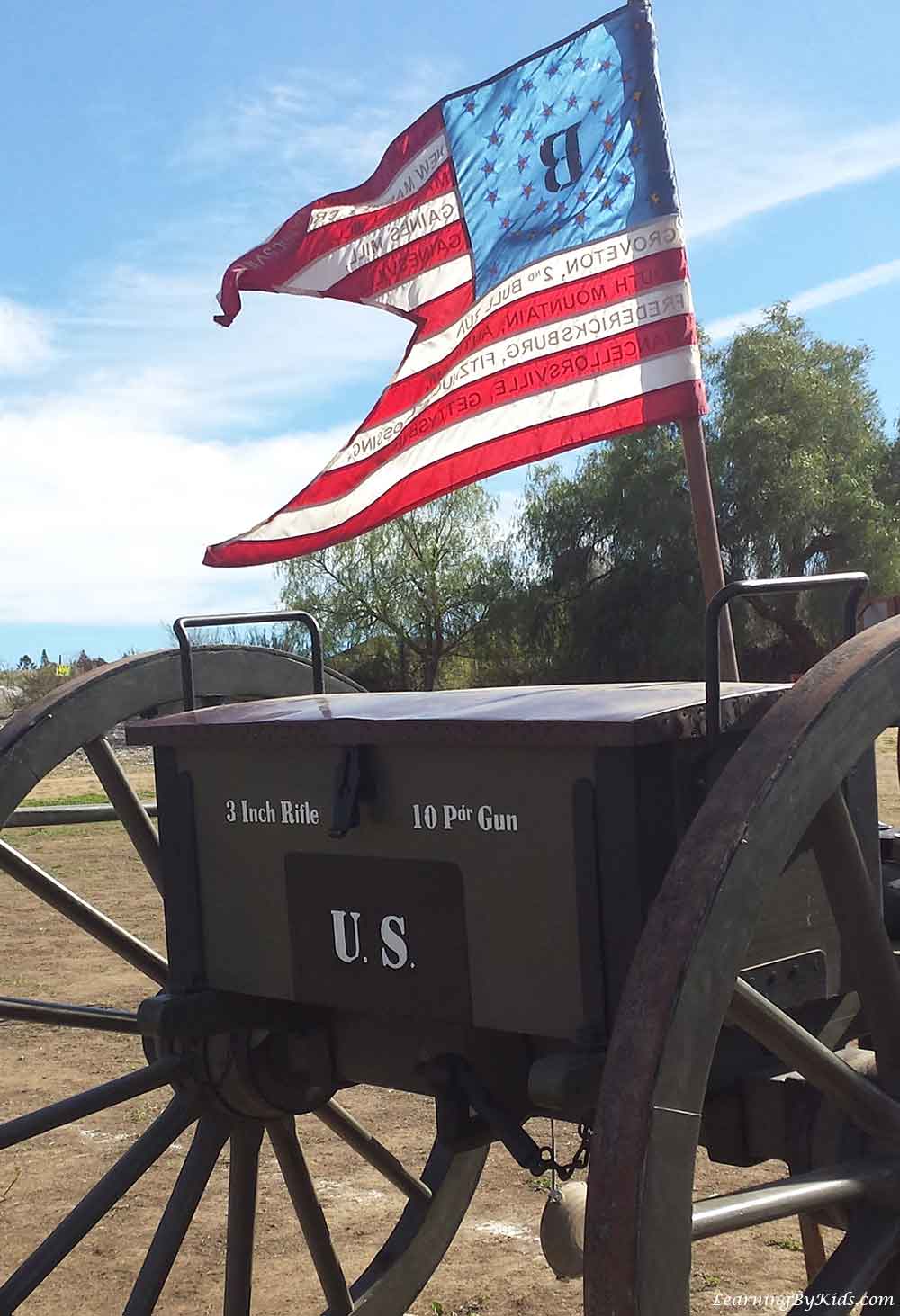The United States Civil War — sometimes called the War Between the States — began in 1861 and lasted until 1865. While the American Revolution gave birth to the US, the Civil War helped define the identity of this country. That is, the US Civil War was fought in order to answer such questions as would we merely be a loose confederation (group) of states, or would we be a united nation of states? Would rights be only for a select few, or would they be for all?
Throughout the country, the lessons of the US Civil War are still being taught in reenactments. These are events where living historians recreate the battles fought during the War Between the States. As the above photo shows, reenactors pay attention to detail.
Besides what takes place at the battlefield, there are also living historians who reenact what the homefront looked like. The ladies pictured above, for instance, were on hand to answer questions about the feelings of relatives left behind, as depicted in archived letters of correspondence.
Also at the reenactment site were tents that simulate how accommodations were like at the battlefront. This tent pictured above was one of the more fancy ones. This tent was meant to reenact an officer’s quarters, a medical tent, or even a military spouse’s tent. In previous wars, military spouses and even children comprised the camp followers who would accompany soldiers.
Meanwhile, here we are visiting the encampment where the troops spent most of their rest time. The living historians there answered our questions about what life for the soldier was like and about the many artifacts that were displayed there.
Battlefield reenactments are highly coordinated. In the photo above, the historical actors were preparing for showtime. The reenactors take classes to keep themselves apprised of the history they portray. Some of their courses cover how to dress and how to fight. They even learn battle tactics and strategies, since the reenactment has to be choreographed with historical accuracy.
During the US Civil War, soldiers were identified by the colors of their uniforms. Union soldiers, or those who represented the Northern states, wore blue. Confederate soldiers, or the Southern troops, wore gray.
While the battlefield reenactment was highly choreographed, it nonetheless also demonstrated that battle is chaotic. Reenactments are performed to serve as reminders of the sacrifices made by those who fought during the US Civil War.
Battlefield medicine changed during the US Civil War. Poor sanitation, bad hygiene, and haphazard hospitalization systems were widespread at the beginning of the US Civil War. But thanks to such Civil War historical figures as Jonathan Letterman, William A. Hammond, and Clara Barton, much-needed improvements were made that, in turn, helped advance medical practices.
Abraham Lincoln was US President for much of the Civil War. This living historian, pictured above, delivered the Emancipation Proclamation to remind us that the war was fought not just to preserve the nation but also to strive for the ideal of freedom for all.
The US Civil War was fought not just by foot soldiers but by mounted cavalry as well. The role of these horsemen was to serve as shock troops to help turn the tide of the battle.
Between battle reenactments we visited the troops to ask more questions and learn about the roles they played. One anecdote shared was on Confederate President Jefferson Davis having a Union counterpart, General Jefferson Davis. During the Battle of Chickamauga in 1863 a group of 21st Ohio soldiers were expecting Union reinforcements. When a swarm of men approached at night, the Ohio soldiers called out, “What troops are you?” The strangers answered, “Jeff Davis’ troops.” The Ohio soldiers let their guard down, thinking the strangers were Union allies. Instead, the strangers were Confederate soldiers from 7th Florida. The Ohio soldiers surrendered, and the South won the battle.
Interestingly enough, many Civil War battlefields are being lost to development and urban sprawl. The Civil War Trust is a nonprofit organization that seeks to preserve these battlefields while simultaneously educating the public about the legacies of the US Civil War.
In the photo above, the living historian playing President Abraham Lincoln watches the Confederate soldiers depart the battlefield. Battlefield reenactments teach audience members certain lessons about the wars they recreate.
While the battle reenactors can be professional living historians or even hobbyists, the photo above (pun-nily enough) indicates that they leave their soles in the battlefield. In any case, we highly recommend that you experience a battlefield reenactment. Some resources to help you with your itinerary include the Civil War Traveler and the Civil War News.














